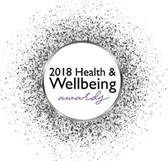|
With the colder evenings now set in for the winter, perhaps heading out to the studio, or getting on to your mat at home feels harder? Some of you have (or want) a regular home practice, some of you only practice in a group class, and some of you do both. In an ideal world we would do both, but home yoga and group yoga are both great in their own right. Our initial challenge is doing something! The main aim is to regularly and consistently move, breathe well, and become more embodied and subtly aware of yourself and life. Our bodies love to move, and when given time and space to practice, respond in incredible ways. The next challenge is doing what is right for you. What will bring you what you need in the most effective way. Group yoga is very different from home yoga, and both have brilliant benefits, advantages and disadvantages. And they are a wonderful complement to each other - in an ideal world, we would do both. GROUP YOGA More challenging. Typically more challenging, not necessarily physically, taking you into new territory in a guided way to discover aspects of your body, breath and awareness that you might not delve in to by yourself. It usually isn't as frequent as home yoga, so that extra challenge has time to integrate over the days until your next class. Teacher guidance. It offers more guidance from a teacher. Habits that you wouldn't notice on your own can be highlighted and explored. A teacher will be able to provide experience in how to overcome obstacles, issues and offer new insights physically and beyond. The process of finding an optimum practice that works for you and your unique body and situation can be achieved more quickly and avoid more of the pitfalls along the way. Motivating. It can be great to bookmark that time in your calendar, and help keep you motivated and accountable so that your practice actually happens. This requires its own commitment to showing up. Prebook your classes or term so that it is given priority in your life. And the friendly faces each week help keep it fun and enjoyable. HOME YOGA Personal to you. Home practice is typically more frequent, often shorter, more gentle and more personal and intimate with yourself. Once you know what your doing, there are less external reference points to guide you. Its just you with your body, breath and mind. The practice can gradually become more internal, and perhaps more subtle. Shorter time more often. If you are taking an hour long, class-like practice every day, chances are this is more than you need to do, so only do that if you know you are being careful, and have lots of spare time or have built this up over a while. It is incredible what a shorter practice, taken daily, with repetition and a well-focused mind-set can add to your life. Start small. I've been guiding home practice in 1:1 sessions for over 15 years and initially, I would suggest that 10-20 minutes is plenty if your goal is long-term. Spend a month doing a shorter practice, getting to your mat daily and consistently, and then only once the habit is established and solid, then consider adding in a little more, step-by-step, until it feels optimal, enjoyable, and fits in to your life. It doesn't have to 'look' impressive for it to be brilliantly effective. 30-day challenge. If your interested in jump-starting your own home yoga practice, your invited to join my free 30-day challenge to help you on your way. Go to the Free Yoga Resources page and start from there. 6-months from now you'll be so glad you did!
0 Comments
My teenage kids can be a challenge with turbulent and unpredictable moods and impulsive behaviours. It's certainly not easy being a teenager. As they are a huge part of my life they take as much energy, patience and goodwill as I can muster. Keeping calm and bringing positive energy to meet their teenage hormones is sometimes the best thing I can do for them, and I can't always even do that! It helps hugely to practice yoga each morning before I head downstairs to greet them. If I manage to arrive with a positive mindset, it effects how my day goes, my perception of everything I encounter, and if I can bring humour and fun to whatever they bring to the breakfast table, it instantly raises their mood too. And if you know any teenagers, moods are a big deal. Our yoga practice is not only for us but also those around us. If our outlook can be improved, then it has a ripple effect that goes far beyond ourselves. We experience each moment of our day through the lens of our minds. We colour everything we encounter with our moods, our emotions and mindset. And if the lens of our mind is cloudy, murky or moody, then that will be how we interpret most things.
And then we do our yoga... Moving and breathing in helpful ways actually shifts things. It changes our state to become lighter, more positive, more vibrant and able to meet challenges with more positive energy, which is contagious.. Weekly yoga, daily yoga even for 10 minutes - it all counts. And it accumulates over time. We build up a positive 'credit' of health and positive energy. We can draw on this when times get tough, and we can invest into it and build up our credit when times are good. Keep showing up to your practice and the ripple effects will positively effect everyone around you. Even teengers.
Thinking about whether to do your practice or not is a slippery slope. Our thoughts are tricky, easily derailed, and unreliable for doing what is best for us.
Not getting to your mat can be tempting when the weather is bad. And without the commitment in advance, it won't get any easier. Take your decision to practice once, in advance, when your feeling pro-active. It is soooo much easier than deciding each day or week whether or not to turn up. If you are constantly questioning whether your practice is going to happen, then Autumn is the season where it will really slide. Pick your time, pick your class, book it in and stick to it, enjoy that you did it. The same way that you don't think about cleaning your teeth each day, you already committed to doing that as part of your life years ago. Yoga practice should be developed to be that same positive habit. I took a drenching this morning going to the studio. But it made me feel alive, vibrant, and great to be outside, rather than home watching the rain. It is always hard when you have to decide to leave the house. Commit ahead of time, book your term or pre-book your month's classes using your membership to help you stick to your good intentions. You'll always be glad you did.
There is plenty in our lives that we have to do; we have responsibilities and obligations. But we can also make a conscious choice when the opportunity arises to resist being busy and distracted.
What can you do more of now that will feel right when you reflect at the end of your life? Mostly attendees were in their 70s and 80s and they enthusiastically enjoyed exploring some yoga postures, breathing, relaxing and ultimately found it revitalising with smiles all around by the end of the short, 25 minute practice. (Or was that because lunch was next).
They sought out the handout to support them with a short, daily routine of yoga to help them rekindle this feeling in themselves. Movement, breathing, focus, coordination, the fun social interaction of a group activity - all these aspects are helpful in preventing the development of dementia and keeping active in any way is great for everyone, including elderly folk. Yoga can be gentle enough to include everyone, doesn't need fancy leggings or mats, and certainly doesn't need to feel esoteric or mystical. Let's move, breath, relax into ourselves and enjoy life a little more :-)
There is really only one reply. Why do you want to be able to do the Lotus posture?
There are lots of ideas about yoga, and one is that the pose has some special quality that once you achieve it, will be bestowed upon you. The myth is that sitting in Lotus posture will mean you are finally 'good' at yoga, or can 'do' yoga, or will be able to meditate more effectively. Perhaps the ego will finally be satisfied (!), or your discomfort with sitting quietly will go away. Truth is, many people will never be able to sit in Lotus posture. Or if they manage it, could well damage their knee, hip, ankle etc. or create other undesirable outcomes. The bigger question to explore, is to understand why have they come to yoga and what can yoga offer them. It might not be obvious at first. There may be paths to pursue that then require a change of course. This is life. But starting them down a safe and satisfying route of practice, while exploring why they want a particular posture so much and helping them perhaps see a greater use of their time, is part of being an effective guide. It may be that 6-months to Lotus pose is a wonderful pursuit, if it gets them on the road to daily, safe, practice. This term in my group classes, we are focusing on sitting in some variation of cross-leg pose. Not because at the end of the term everyone will be able to sit cross-leg, that would be a fools promise. But to help those who can and want to, move towards it safely, and those who can't (or can but shouldn't) realise that another pose, or sitting on a chair, may well be far more beneficial and fruitful for their meditation practice. Enjoy the practice. Comparing yourself or aiming for someone else's practice is a reliable way of making you unsatisfied and unhappy. 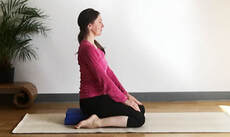 Spend a moment answering these questions: 1) What do you want from your practice? 2) Why? 3) What difference will this make? 4) Why don't you just < ... > instead? (put in something that is quicker, easier, more convenient etc.) Once you're satisfied that you've been honest and thoughtful, set yourself a suitable practice target to stick with for a minimum of one month and see if the results fit alongside your answers. If they don't, go back and rethink, or ask your teacher for guidance. Yoga can be brilliantly effective at many things. It is helpful to know what you want from your efforts and apply the tools appropriately. If your not sure you have a goal, and just enjoy the practice, that is absolutely fine, no grand goals required, but it can be helpful to have clarity on your aims and means. Sometimes our the ego tells us our efforts are worth it but it can be a competitive exercise that we are pursuing without realising it. Our goals could well be met with less practice or another activity or more breath focus and meditation and less asana. I know people who practice to get their back stronger but then avoid the safe back-strengthening exercises preferring to rest the area. Appropriate sometimes but at some point, you need to gain more stability in the back, and maintain it so that the problem doesn't re-emerge. Let me know how you get on. 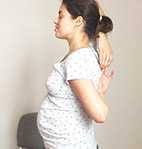 A common question, often when you are getting going with it. What's my response? Well it depends on your aims and needs and what other life commitments you already have. Regular is good, but more is not always better. I practice yoga every morning, before the day gets going. Before the kids are awake and when the house is still relatively quiet. I get up and take to my mat or whatever space is available if I'm not at home. I take asana (yoga postures), pranayama (breathwork) and then sit in meditation. This is my foundation, and it feels essential with teenagers in the house. It's not a chore, I love it and miss it if I don't do it. Is a weekly yoga practice enough A weekly practice provides a regular, intimate contact with yourself, your health and wellbeing. Spending time with a close connection to your body, your breath, your mind, Moving your body in ways that support your physical and mental health, breathing well and allowing space for the mind to quieten. Is daily yoga practice a good idea?I encourage my students to take practice in between classes. I provide short practice handouts based on what we do in class, and offer advice to support them in developing their own home practice. This doesn't work for everyone, but even 10 minutes a day can be a brilliant addition to your day. A daily practice is different to a weekly class. The daily practice is more intimate - you are there connecting with your body, breath and mind more often so the relationship with yourself becomes more refined. Your understanding of your body each day will develop, along with the understanding of your breath and mind and the thought patterns you begin to notice. I have a course that is set up to help you develop a regular home practice if this sounds appealing to you: Home practice course > Is there such a thing as too much yoga practice? I've certainly come across keen yoga practitioners who do a lot of yoga practice, sometimes several hours a day. Anything can be taken to extremes so of course that is true with yoga practice as well. Equally there are those who have a modest daily practice who find it invaluable. How much do you actually need to gain the benefits you seek. And how much is your ego telling you more is better or being competitive with yourself or others? How will I know what suits me?It might not be the quantity of the yoga techniques that is being practiced but perhaps what has been chosen to practice. A yoga teacher is a great resource to help you find a suitable practice. Ensure that the teacher you choose is experienced and isn't just about fitness and getting stronger and more flexible. There is more to yoga and more to life.
Anything is better than nothing, but too much might not be as helpful as you think... 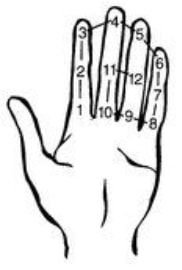 You'll likely be familiar with how important breathing is to the practice of yoga. It's a remarkably effective and direct way to leave behind your whirling mind, once you've become comfortable with it. If you've not yet discovered the benefits of breath focus, you may wonder what all the fuss is about and decide that the usual everyday breathing we do all day long is sufficient. Breath focusBreath focus, or pranayama in Sanskrit, is a profound and accessible tool that can offer a way into a direct experience of yourself, your mind, body and breath. A bridge out of being lost in thought, lost in worries, day dreaming etc. You move beyond thinking about the breath and become able to simply experience the breath with full awareness. At first maybe just for micro-moments, but over time in more sustained ways. If you've ever tried this, you might be thinking, easier said than done. But like many things that are worthwhile, it might take a bit of practice to get the hang of it. 12 count hand mudraA technique we've been using in my yoga classes this term which can be hugely helpful, is the 12-count hand mudra. A brilliant device for accessing the breath awareness more fully. A simple hand gesture that once it is familiar enough is a great addition to your yoga toolkit. Using the left hand turned up, the back of the hand resting on your thigh, you use the thumb to count round the 12 inner creases of each finger (inside the knuckles). - Place the thumb on the first crease of your first finger, and take a breath (inhale and exhale). - Then on the next breath, moving the thumb to the middle crease on the first finger. - With 12 creases to count on your fingers, you move round in a spiral shape among the creases. With 12 movements of your thumb, 12 breaths, you finally reach the middle of your ring finger (as long as you didn't forget to move your thumb and remembered to only touch each finger crease once). Simple but effectiveIt is similar to counting on beads, and serves the same purpose. It helps you move away from your thoughts, and for a moment leave behind your conceptual mind (counting after all is conceptual). The counting has been migrated to the hand so the mind is free to experience the breath more directly and fully. You are able to count without thinking about counting. This technique, once it is practiced enough for it to be comfortable and easy, allows you to move out of thinking and come more fully into directly experiencing the breath and the sensations in your hands. From here, you can experience each breath and moment in a new way. It is a simple idea. As a technique it doesn't have the glitter of a complex body shape or flow of movements, but in its simplicity lies its power. So ... a challenge for you- Week 1: Use the mudra everyday to learn it and become comfortable with it
- Week 2: Then se it every day with more subtlety and more proficiency and notice the difference. Simply take 12 quiet breaths, counting on your hand. Notice what you experience when you do it, how it leaves you, and if this has any bearing on the rest of your day. Enjoy and feel free to get in touch with questions. 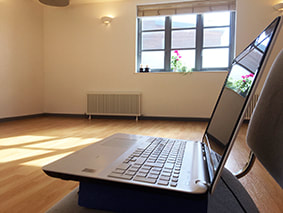 Online yoga has firmly established itself in our lives. It offers brilliant benefits and enables more people than ever to discover yoga practice. Yoga is so good, that even a a few asanas (postures) can quickly improve how you feel - as can other straightforward exercise forms. Anything is generally better than nothing, no matter what it is. The body likes to move. So having an in-person yoga teacher isn't a pre-requisite to get started. 'Yoga with Adrienne' and those like her have a valuable and worthwhile place in a yoga practitioners tool kit. Is in-person yoga different?I teach a handful of people who I've never met in person, just via the screen. I know most of my online students from before we all went online, but a few have joined me along the way. Some of these have since met me for 121s or come to my studio for class from time to time so that I can get to know them and their practice further. This is immensely helpful. Seeing them in-person helps the guidance be more tailored to them, and also helps me then picture what they are likely to be doing when they appear in their little box on the screen. I can anticipate the habits they are likely to accumulate if I see them from time to time. If I haven't seen you in two years, I have very little to go on except where you were 2 years ago, and what you have fed back to me along the way. When I see you practice in your little box, I'm able to see if you have got the right end of the stick, I can pick up on a few cues, and so can trust that the basic benefits will be coming your way. Then there are people I see regularly in-person. We chat, I see them practice and see the response in them, I see how they breathe, and hear the quality of their breath, which can be the most revealing part of someone's yoga practice and helps me provide more nuanced guidance. I can see where they benefit and where they struggle, notice their expressions or tension signs during practice, and help them practice with increasing skill. Deepening a yoga poseYoga practice isn't just about accessing a posture, going 'further' in a pose, or developing physical prowess. The health benefits and physical development are rather wonderful and compelling side effects. Often we aim to do 'more' with a pose or with the breath than is necessary. We continually 'try' and 'strive' in our practice. We want to go further, deeper, stronger, and so on. If we aren't trying, then what is the point? Trying too hardThis accumulative 'trying' is perpetuated from the rest of our life, and seems to be an expectation of all our pursuits. If we aren't 'getting anywhere' then why bother? We 'try' all day long, pushing, striving, grasping, wanting in sometimes very subtle ways. Our yoga practice doesn't have to be that. It can be a counter point to how we habitually find ourselves in the rest our life. It can become a place of skillfully noticing our habits and attitudes and then finding ways of 'letting go', of shedding and removing blocks, tensions, excess efforts. These are commonly blind spots that you can't see on your own, or at least it will likely take you much longer. Yoga is as much about 'doing' something as it is about 'un-doing'. Offering ways of moving, breathing and sitting which are beyond a place of struggle and striving. Helping to find a place of greater freedom which might not be realised when you are seemingly getting along fine on their own with their screen as the guide. Finding qualities of space and freedom in your yoga practice can be revelatory. Discover moreHere's the thing with yoga... you can take practice for years and enjoy the immediate benefits of it helping you feel great. It provides so much - bringing us a comfort in our body, breath and mind so quickly. It provides so much strength, health and suppleness over time too. This is its power but also its sticking point. As we then might overlook its greatest potential. The developmental discipline, subtlety and insightful power of intimate yoga (in a space that doesn't involve a screen).
It awaits discovery for those who are curious. 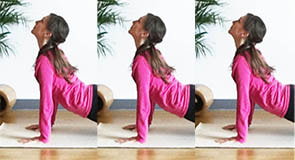 Some approaches to yoga teach the same sequence of postures and techniques that you learn, practice, develop, progress and refine over many years (e.g. Ashtanga Vinyasa). Some yoga teachers change what is taught in every class (e.g. Vinyasa Flow can get very creative). There are benefits and pitfalls to each and of course it doesn't need to be one or the other ... I teach a midline in my group classes, but with a definite pointer towards repetition and familiarity of postures, breathwork and technique. Hopefully leading you towards daily practice, repeating your personal home practice each day without variation unless there is a specific reason to adapt it. Group yoga classesMy group classes follow a term of more or less the same practice - that is several weeks of the same class. There is some development of the poses over time, exploring variations or subtleties within the poses as they become increasingly familiar. Repetition in this way helps you move beyond the excitement of 'what are we going to do today?' to allow you to become more deeply involved in what and indeed how to practice and enable you to refine what you are doing and perhaps discover more subtlety and more spaciousness in the practice. Rather than inviting in exploration of what is new and exciting, removing the novelty to leave space for other aspects to emerge. Pros and consVarying what is taught every couple of months supports you to encounter new postures, techniques and ways of practicing, learn how to do them in ways that suit you, and perhaps even discover that they are valuable to you and perhaps include in your own home practice.
Creative practice can be exhilarating and entertaining. Trying new things, exploring your body and breath, capturing your attention in new ways. This is particularly important for younger people who need the variety to keep them engaged and to keep them coming back to the practice. It can be satisfying in a way that is hugely important when you are embarking on your journey and need external motivation to keep going. I practice almost the same thing every morning. However as with all elements in viniyoga, it is about picking the right tool for the job and teaching what is beneficial and appropriate to the person wanting to practice yoga. What do you think?
My 20202020 was a year like no other. It was completely unexpected and included things I never thought I would do in my life.
An incredible yearGiven all the limits and constraints of the year, I found it incredible in many ways. Some things of course I'm hoping we move on from. But I've learned so much, and continue to learn from all that has been thrown at us. My meditation practice allows me a welcome space to sit with the tragedy of the year, and the heightened visibility of inequality and privilege demonstrated through the virus's progression through different communities and countries and the BLM movements. A clear re-evaluation of life and what to do with the privilege that I have is an ongoing project. Perhaps we've all come to value our health and way of life more than ever before. We can more easily recognise the gifts of our health and our privilege and ensure we use these gifts well in our daily lives. Top tipsStart small, for achievable and sustainable progress. From how we make ourselves more resilient in our own health, through our lifestyle and dietary choices, to how we interact with others and treat our neighbours and engage with our local communities. My top tips for every day:
There are lessons for each of us from 2020. If any positives are to come of last year, let's find them and take them to heart.
Yoga - the art of moving, breathing, sitting and reconnecting to that sense of grounded perspective and awe. Using the practice to become revitalised yet quietened in body, breath and mind, Quiet enough even, to notice and dwell in that internal spaciousness that was the same yesterday as it was the day before that, and the year before that... It's quicker than you thinkAll it takes is some simple movements, attention turned towards the breath, and bringing a steadiness and calmness through intentional focus. Then space to sit and be still for a moment. Like any skill, there is a learning curve to establishing the necessary skills and understanding of what you are doing. A practice that suits you and works for you might take a bit of exploration and discovery (this is where a teacher is very helpful). But it's certainly worth the effort. Daily yoga practice doesn't need to be hot, vigorous or sweaty. It doesn't need to be acrobatic, complicated or impressive. It doesn't require flexibility or strength. It doesn't need to be on a yoga mat and lycra is definitely not required, PJs are perfect. I find it truly remarkable how little it takes to feel like I'm thriving again (after another tiring day of home schooling, therapeutic parenting, an onslaught of bad news from the media, and restrictions on day to day living). Of course if you enjoy making it tough, sweaty, vigorous, or otherwise, then that is great and the benefits will speak for themselves. But there is also a much simpler and more accessible alternative that can be discovered. if that will suit you better. Home yoga practice videos coming soonI'll be posting some home practice yoga videos online soon to support some simple home practices that you might find helpful. A yoga class is of course great - it helps you learn the skills and techniques that are time tested to work and gives you a longer practice and more time than you'd likely dedicate to yourself on a daily basis. Yoga classes also get you learning from a teacher who has been where you are and can guide you more skillfully (as long as the teacher has the opportunity to get to know you and your practice and aims). But I'd encourage anyone who is interested to take up a short daily yoga practice too. 10 minutes can truly work wonders. Or join in my yoga classes and there is a home practice handout each term based on what you've learned to help get you started with your own home yoga practice.
Please don't be fooled by the Instagram/media yoga-hype --- it simply doesn't have to be that complicated or hard, it doesn't have to take ages, and no, you don't need to balance on your hands / head at any point. Check back soon or join the mailing list for updates on videos coming soon (once the home-schooling gaps permit). |
More blog articles >Categories
All
Archives
July 2024
|
|
Bristol YogaSpace Ltd
Princes Place, Bishopston Just off Gloucester Road Bristol BS7 8NP |
|

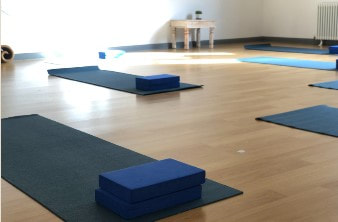

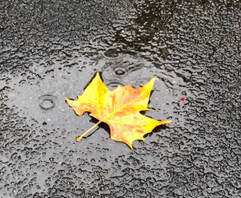
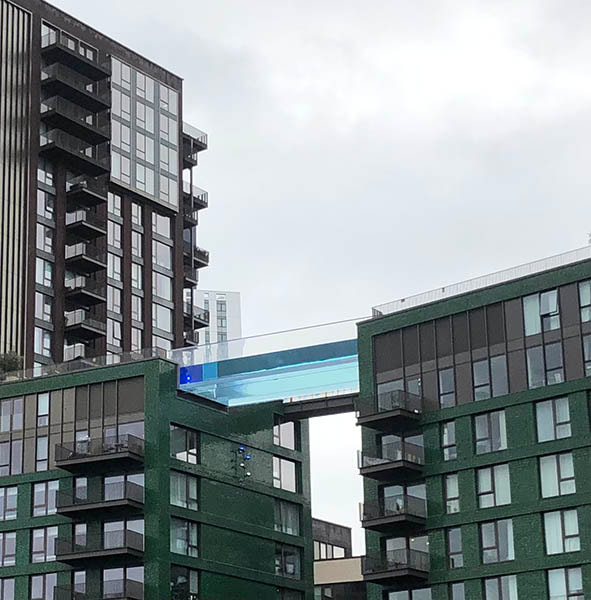
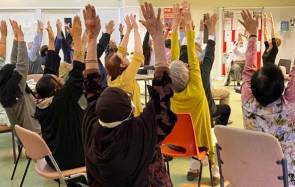
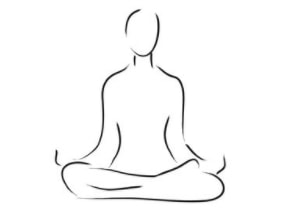

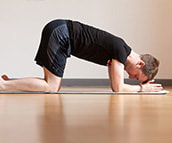

 RSS Feed
RSS Feed

